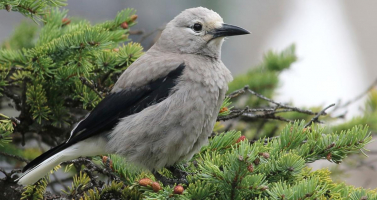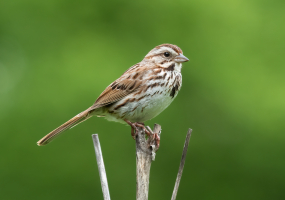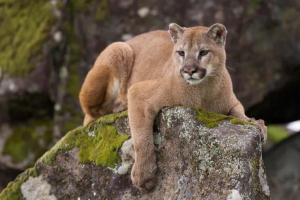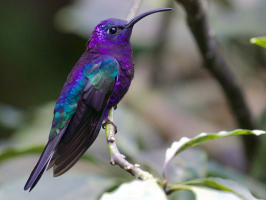Top 10 World's Beautiful Yellow Birds
With more than 10,000 living species around the world, birds are one of the most beautiful creatures of mother nature enthralling minds and soothing souls. ... read more...Their amazingly colorful feathers capture the attention of every bird lover. Among the colors of birds that can be seen, there are a lot of beautiful birds that have a yellow color in their plumage, or feathers. Below is a list of the most beautiful yellow birds in the world, let's find out!
-
The American Goldfinch (Spinus tristis) is a small North American bird in the finch family. It is migratory, ranging from mid-Alberta to North Carolina during the breeding season, and from just south of the Canada–United States border to Mexico during the winter.
The American goldfinch, the only finch in its subfamily to go through a full molt, exhibits sexual dichromatism: the male is a bright yellow color in the summer and an olive color in the winter, while the female is a dull yellow-brown shade that only marginally brightens throughout the summer. During the breeding season, the male exhibits vividly colored plumage to entice a mate. With a conical beak to remove the seeds and quick feet to grab the stems of seedheads while feeding, the American goldfinch is a granivore designed for eating seedheads. Because it is a gregarious bird, it will congregate in sizable flocks while foraging and traveling. During nest construction, it may exhibit aggressive behavior, however, this behavior is transient.
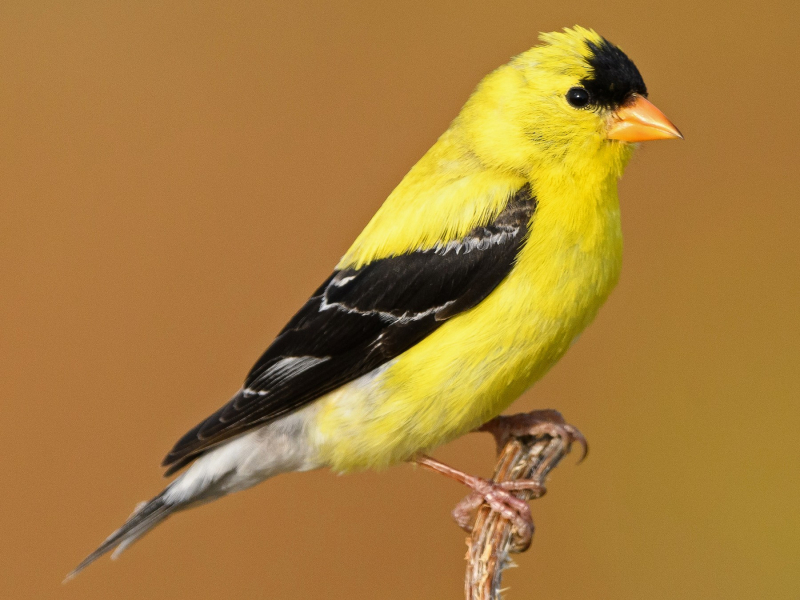
eBird 
eBird -
The Yellow Warbler (Setophaga petechia) is a new world warbler species. Yellow warblers are the most widespread species in the diverse genus Setophaga, breeding in almost the whole of North America, the Caribbean, and down to northern South America.
It prefers an elevation of 9,000 feet, but due to habitat destruction, pesticide contamination of the ground, and unintentional collisions with man-made items, the population is in decline. It can reach a maximum length of 4.7 to 5.1 inches and weighs between 0.3 and 0.4 ounces. In terms of appearance, it has a belly that is bright yellow and an upper side that is covered in golden-green feathers. Males have reddish-brown patterns on their breasts and flanks and are brilliantly colored overall. In the wild, the average lifespan of the bird species is ten years.

Wikipedia 
eBird -
The Cape Weaver (Ploceus capensis) is a species of bird in the weaver family, Ploceidae, found in southern Africa. The Cape weaver is omnivorous with a diet that is evenly divided between animal and plant matter, particularly seeds, fruit, and nectar. It forages in a variety of ways on the ground, in tree foliage, gleaning food from bark, and hawking insects in the air. The Cape Weaver forms flocks when it is not breeding and assembles in sizable roosts all year long. These roosts may be shared by other birds, including other weaver species.
The Cape weaver is a robust 17 cm tall bird with olive-brown upper parts that are streaked, as well as a strong, pointed conical bill. The breeding male has a white iris, an orange face, and a yellow head and underparts. The mature female's head, breasts, and lower belly are all shades of olive yellow that fade to pale yellow. The eyes of a female are brown, but 19 percent of them have pale eyes in the summer, making it impossible to tell a woman's gender only by looking at her eyes. Young birds resemble females.

eBird 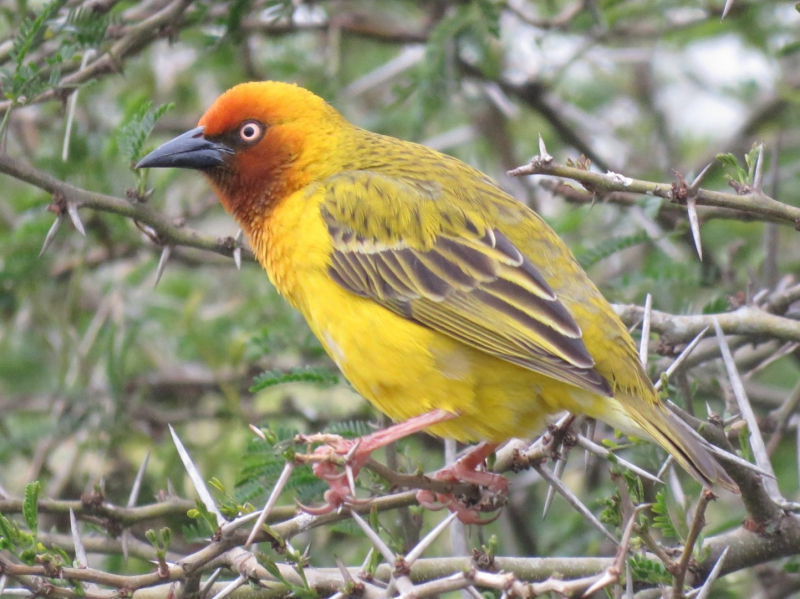
eBird -
Golden Pheasants are renowned for having brilliantly colored feathers. They have a stunning red-tipped golden-yellow crest. Their face and underparts are a vivid crimson color. Rusty tan covers the sides and throat. The upper back and wattle are green and yellow, respectively. They also have a long, pale brown tail and dark, red shoulder feathers.
Golden pheasants' males are brighter than their female counterparts. Their flanks and breast are a recognizable scarlet color. They also feature remarkable black patches in the center of their tail feathers. Female pheasants have duller, more mottled brown plumage than do males. In Western and Central China, there are many deep forests and woodlands where golden pheasants can be found. Longer male golden pheasants than females. A mature guy typically measures up to 42 inches in length. It's interesting to note that the tail makes up two-thirds of the body's length. They mostly eat berries, seeds, and insects for food.

eBird 
Freepik -
The Southern Masked Weaver (Ploceus velatus), or African masked weaver, is a resident-breeding bird species common throughout southern Africa. This weaver inhabits a broad variety of habitats, including shrubland, savanna, grassland, open woodland, inland marshes, and semi-desert regions. It is extremely widespread. It can also be found in parks and gardens in suburbs.
The southern masked weaver has pinkish brown legs and an 11–14.5 cm long body. Its bill is short, robust, and conical. The adult male's breeding plumage includes a basic yellowish-green back, a black face, throat, and beak, red eyes, and bright yellow head and underparts. The female is drab greenish-yellow in color with darker streaks on the upper back. Her bill is pinkish-brown, and she has brown or reddish-brown eyes. On the belly, the throat's yellowish hue fades to off-white. The male who does not reproduce resembles the female but nevertheless has a red eye. This species' young resembles the female in every way.

eBird 
Flickr -
The Cream-Colored Woodpecker (Celeus flavus) is popular for its distinct yellow plumage and beak along with dark brown wings and black tail. The male of the species can be identified by the female thanks to its strong, vivid red malar stripe. It weighs between 95 and 130 grams and can reach heights of 24 to 26 centimeters. The bird species is indigenous to South America, and it is most frequently observed in the countries of Colombia, Venezuela, and the Guianas, as well as in Peru, Bolivia, and the eastern part of Brazil.
Termites and arboreal ants make up the majority of the diet, with seeds and fruit serving as supplements. forages on trees as well as the ground, both alone and in groups. pecking at termite nests on trees, which is frequently observed. Although the cream-colored woodpecker is widely thought to be rare, it has been given the designation of Least Concern. Over the next few decades, it is anticipated that the population would decline due to the annual declines in suitable habitats.

eBird 
eBird -
The Golden Parakeet (Guaruba guarouba) or golden conure, is a medium-sized golden-yellow Neotropical parrot native to the Amazon Basin of interior northern Brazil. It is the only species placed in the genus Guaruba. It is endangered by deforestation, flooding, as well as the now illegal practice of catching wild animals for the pet trade.
The golden parakeet is 34–36 cm long, mostly yellow, with green on the outer wings, and it has a tail that is entirely yellow. It features pink legs, a huge horn-colored (gray) beak, brown irises, and pale-pink eye rings. External appearance is the same for males and females. Compared to adults, juveniles have more green and less yellow in their plumage. The juvenile's head and neck are primarily green, while the back and top side of the tail are green and yellow, the breast is greenish, the eye rings are pale gray, and the legs are brown.

eBird 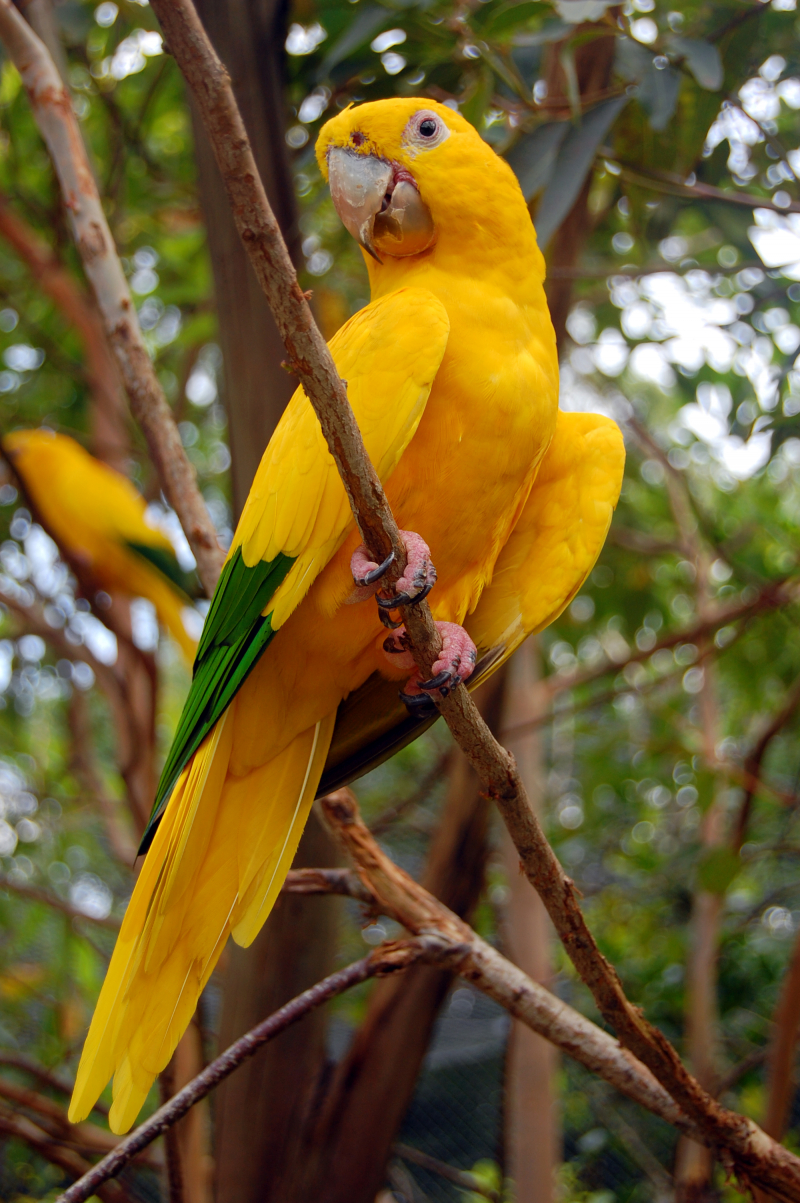
Wikipedia -
The Yellow Grosbeak (Pheucticus chrysopeplus), also known as the Mexican Yellow Grosbeak, is a medium-sized seed-eating bird in the same family as the northern cardinal. The yellow grosbeak can be found in southern Chiapas and Guatemala as well as on the Pacific slope of Mexico from central Sonora to northwest Oaxaca. It migrates through Sonora. The majority of its occurrences are in trees in forests, woodlands, and edges; it is typically absent from dense rain or cloud forests.
The yellow, white, and black or gray colors of the plumage contrast sharply. In most populations, the head and underparts of males are a solid pale yellow. The top tail coverts are black with white tips, the rump is yellow, and the back is black with yellow mottling. There are noticeable white markings, patches, and wine bars on the black wings and tail. Similar in appearance, females have darker streaks on the head and back and more olive upper parts. The white markings on the wings, notably the white base of the primaries, are reduced and replaced with gray instead of black. Females have a pattern that is very similar to that of flame-colored tanagers, but they are significantly larger, especially in terms of the bill. Overall, immatures resemble females.

eBird 
Pinterest -
The Black-and-Yellow Tanager (Chrysothlypis chrysomelas) is a fairly small passerine bird. This tanager is an endemic resident in the hills of Costa Rica and Panama. They occur in small groups, or as part of a mixed-species feeding flock. This species feeds on small fruit, usually swallowed whole, from insects, and spiders. The neat cup nest is built on a tree branch. The eggs are undescribed.
The black-and-yellow tanager weighs 12.5 grams and measures about 12 centimeters in length. The mature male has a black back, wings, and tail, together with a brilliant yellow head, rump, and underparts. White lines line the wings. A black mark on the lores distinguishes the male of C. c. ocularis from the female. The female has a whitish throat and lower belly in Costa Rica and extreme western Panama, but otherwise has olive upperparts and yellow underparts. She might be mistaken for a female yellow-backed tanager or a warbler. Young females resemble adults.

eBird 
eBird -
The Saffron Finch (Sicalis flaveola) is a tanager from South America that is common in open and semi-open areas in lowlands outside the Amazon Basin. They are widely distributed in Colombia, northern Venezuela, western Ecuador, western Peru, eastern and southern Brazil, Bolivia, Paraguay, Uruguay, northern Argentina, and Trinidad and Tobago. Additionally, it has been brought to places like Hawaii, Panama, Puerto Rico, and others. It is not related to the Atlantic canary, despite being frequently mistaken for a canary. Formerly, it was placed in the Emberizidae but it is close to the seedeaters.
The male stands out from the majority of other yellow finches by being bright yellow with an orange crown (the exception being the orange-fronted yellow finch). In general, the females are just a somewhat duller version of the males and are more difficult to distinguish, but in the southern subspecies of S. f. pelzelni, they are olive-brown with prominent dark stripes.

eBird 
eBird














